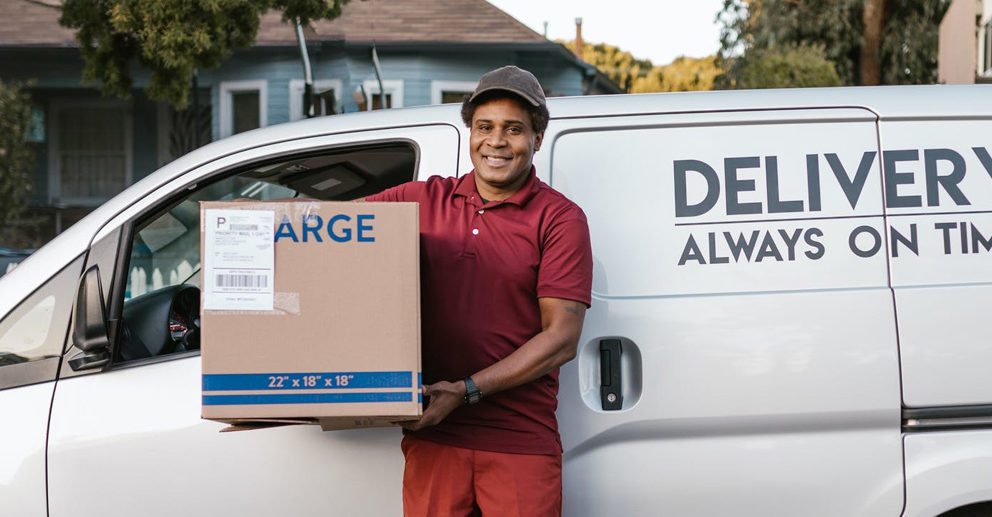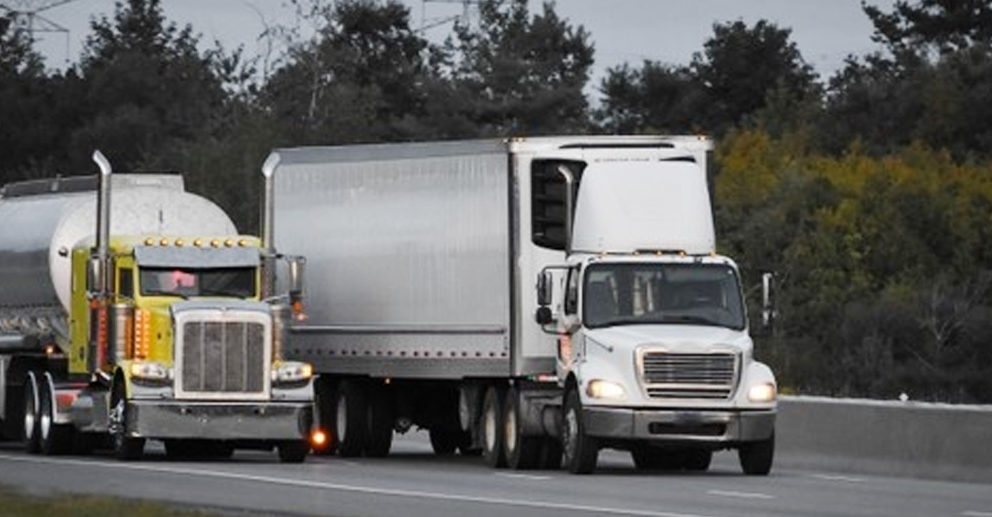With the world becoming “connected” in every sense and digitization taking over all aspects of our lives, connected fleet technology is all set to take the automobile industry by storm. Effective implementation would totally revolutionize the way we drive!
Read on to know more about
What is connected fleet technology?
A connected vehicle utilizes wireless networks to connect to devices in its vicinity. Connected fleet technology is what creates connected vehicles that can predict each other’s movements and therefore avoid accidents by warning drivers about dangerous driving, slowing down, and overtaking. It delivers a variety of vehicle-related data that can be used to streamline fleet operations. Connected fleet technology can be used for the following purposes:
- Vehicle tracking to pinpoint the precise location of vehicles, which includes geofencing and proximity search.
- Route planning, scheduling, and dispatch.
- Monitoring driver behavior – watching out for troubling driving patterns, mileage logging, expenses management, driver ID, working time, etc.
- Promoting eco-driving.
- Remote diagnostics and maintenance alerts.
- Order management, which includes, order entry, dispatch, order status information, electronic proof of delivery.
- Reducing expenses related to fuel and idling.
- Tracking and recovery of stolen vehicles.
- Preventing unauthorized use of assets during and after work hours.
How does connected fleet technology work?
As of now, vehicles have to be linked up to the Internet, in order to be successfully connected. But in the future, cars could be connected by short-range radios for extra communication. This technology relies upon instant communication between vehicles in order to work effectively, but it needs to work universally too, regardless of vehicle brand, model, or location.
There are two kinds of systems being used in vehicles these days – embedded, which means the car is equipped with a chipset and built-in antenna, and tethered, where vehicles are integrated with hardware that connects to the driver’s smartphone. Connected fleet technology can be used to gain access to and send data, connect with other devices and vehicles via IoT, download software updates or patches, and provide Wi-Fi connectivity. Even telematics data can be accessed conveniently.
Using connected fleet technology in fleet management
Needless to say, connected vehicles will improve fleet management services by a great deal. Once vehicles are connected to the Internet, all information can be accessed swiftly by fleet managers. As mentioned, this technology can be used to access telematics data, so drivers get notified of vehicle health, along with potential problems. If a component needs to be replaced or a part isn’t working the way it should, proper maintenance procedures are a must, before they become the cause of accidents.
It is highly likely that connected fleet technology will be seamlessly integrated into completely autonomous vehicle technology in the future. At first, drivers could still be required to fill a precautionary role in autonomous vehicles. This way, the transition from human-driven vehicles towards fully autonomous, driverless, technology, is smoother. When fewer drivers hit roads to carry cargo and more traffic is being supervised by autonomous programs, fleet management will become an even more important task within transport-oriented companies. The technology can effectively survey the status and health of its company vehicles via IoT. Even though route optimization does a great job, connected vehicle technology can be used to fine-tune the process, in order to find the perfect route to avoid traffic.
Take a look at how connected fleet can be beneficial
Connected fleet is much more than just monitoring assets and drivers on a virtual map. It can be used for cost reduction, addressing maintenance problems, optimizing routes, and much more. Take a look:
Cost reduction
When drivers operate the vehicle recklessly or aggressively, it increases fuel consumption and results in premature wear and tear of components. But connected vehicles are equipped with vehicle tracking that alerts fleet managers whenever there is rapid acceleration, sharp turns, rough braking, and other troubling signs. The system also sends notifications about idling, so fleet managers can take preventive measures accordingly. Since you get regular updates about vehicle diagnostics, maintenance procedures can be scheduled. Predictive maintenance leads to great cost savings in the long run.
Instant alerts about unauthorized use
When vehicles are parked at work premises, parking lots, depots, or any other place, you will get instant notifications if they leave the area. This is where the geo-fencing feature plays an integral role. You can utilize it to ensure drivers don’t deviate from pre-determined routes while staying away from restricted areas. The moment a vehicle changes its route, you get a notification. Automatic alerts are also useful if someone is trying to steal the vehicle.
Creating a safe work environment
Since fleet managers are aware of the real-time location of assets at all times, a proactive approach can be developed to keep personnel and assets safe. If there is an emergency situation on the road, immediate help can be dispatched. To promote safe driving practices, you should constantly monitor speeding, hard braking, phone usage, and aggressive acceleration, and make good use of this data to target troubling driving behavior.
Boost operational efficiency
Using connected fleet technology, fleet managers can get crucial evidence when it comes to liability mitigation and root cause analysis. Important data like date, time, and location validation is important to prove or disprove a case, in case there is a dispute or accident that involves an employee. Basically, it helps managers with both backend and vehicular operational improvements to avoid potential breakdowns, repair costs, and coordination problems, which could affect customer delivery and result in damage to the bottom line and credibility.
Optimizing routes
It isn’t possible to stick to fixed routes. Fleet managers should concentrate on scheduling routes that are not only fast but cost-effective as well. The tracking feature can predict where and when a truck will arrive at a location, meaning that coordinating the next load and keeping that truck moving efficiently is simple. Here too, geo-fencing is very useful as it helps to create a virtual map for vehicles to arrive and depart, so managers know when a certain vehicle enters and exits.
Offer better customer service
At the end of the day, it is all about keeping the customer happy, which means shorter delivery times and premium quality service in one package. Since live tracking lets you know the precise location of fleets, you can provide updates accordingly. You don’t want to deal with angry customers asking when their shipment is due or why there is a delay.
How to integrate a connected fleet in your fleet management?
A few years back, basic vehicle tracking was sufficient for businesses, but now there is a need for wider and clearer visibility across the entire fleet. A humongous amount of data is generated from vehicles, assets, and related systems, which are collated for making informed business decisions. Predictive analytics are also vital when it comes to maintenance issues, which helps to increase the lifespan of assets and keep them functioning for a longer period of time.
When you integrate connected fleet technology in your fleet management strategy, it lets you view operations as a whole. Instead of focusing only on assets and vehicles, it enables you to visualize the entire workforce as a single entity, which means better fleet management and smooth business growth.
When it comes to managing drivers in the field, it can be quite challenging but mobile workforce management with the aid of connected fleet technology makes it simpler. For instance, you can create customized training plans for each driver to boost safety, as the technology lets you monitor their driving patterns consistently. You can even use a driver identification feature to find out which driver is behind the wheel of each vehicle and for how long. Integration of connected fleet means massive improvements in accountability, safety, maintenance, asset & vehicle management, cost savings, inventory management, payroll, and back-office operations.
Risk involved in connected fleet
Connected vehicles can drastically lower the number of fatalities and serious injuries due to accidents on roads and highways. While the number of people surviving crashes has increased significantly thanks to airbags, anti-lock brakes, and other technology, it is imperative to implement solutions that prevent such crashes in the first place.
Connected fleet technology allows cars, trucks, buses, and other vehicles to "talk" to each other with in-vehicle or aftermarket devices that continuously share important safety and mobility information. This technology has more benefits than newer ones appearing in high-end vehicles such as radar, lidar, cameras, and other sensors. This technology has a greater range than onboard vehicle equipment that allows receiving alerts regarding dangerous situations. It gives more time to react and prevent accidents as it doesn’t rely on “line of sight” communications to be effective, unlike radar. So if a car ahead is braking hard on the other side of the hill due to an obstruction, you would still get notifications, even if you can’t see or aren’t aware of the hazardous situation.
Human intervention isn’t required to avoid collisions or detect failing engines. For instance, a truck hauling a load of perishables is cruising down the highway, but road conditions suddenly change, due to a patch of gravel up ahead. The car beside the truck bounces and swerves to the right, but the Connected Fleet technology in the truck senses it and automatically brakes, thus averting accidents. As smart cities build smart roads, those roads are being filled with smart vehicles. And those vehicles are becoming computers on wheels, using onboard monitors to track the location of the vehicle, its mechanical health, and the driver’s performance. Even though vehicles have transitioned from using basic GPS tracking, the GPS-enabled telemetrics still make up the crux of the connected fleet.
Did you know that nearly 40% of fleet managers consider “connected vehicles” as a must-have, as per a survey by Frost & Sullivan? The research firm predicts there will be 63.5 million trucks as part of the globally connected fleet by 2025. Safety benefits of the connected fleet are quite obvious, like collision mitigation systems that keep vehicles at a safe distance from each other, along with lane departure monitoring systems that can alert a driver operating on any road that a car is their blind spot. Apart from that, it helps to keep up with customer expectations, such as informing them when their package is due to arrive.
Apart from guaranteeing safety, a connected fleet also increases transportation options and reduces travel times. If traffic managers are able to control the flow of traffic better with the advanced communications data available and prevent or lessen developing congestion, it could significantly reduce fuel consumption and emissions. It has excellent potential to succeed and can be applied to conventional vehicles and self-driving cars.
The Future of Connected Fleet
It is evident that the connected fleet will play an important role in the future. Here are the aspects to watch out for:
- Capturing information – It allows fleet managers to access OEM-specific data that helps manage daily business decisions and long-term investments such as the total cost of ownership.
- OEMs being embedded with telematics devices – Fleet managers don’t have to purchase and maintain extra hardware, no installation is required, and the system is easier to manage. Moreover, aspects like vehicle location, routing, fuel usage, and idle time can be monitored at all times.
- Telematics service providers (TSPs) collaborating with OEMs – it is being done to improve data capture capabilities to benefit fleets by providing API connections for larger fleets, both directly and through telematics service providers.
- Clear and actionable insights – With tremendous amounts of data being generated from fleets, the real value lies in turning that data into actionable insights that can help your business and make the process easier. It enhances productivity and allows better route optimization while helping to manage downtime and costs.
- Evolution of electric vehicles – This part is related to the total costs of ownership. While there could be fewer data to manage on some conventional fronts like maintenance and fuel costs, new data has to be factored in, around charging infrastructure, employee charging reimbursement, and management information.
- The emergence of 5G – 5G networks continues to be deployed rapidly, so the Ericsson Mobility Report states that the automotive industry is expected to be among the Big Four for 5G enabled service provider opportunities by 2030. 5G, combined with 4G LTE services, greatly improves the potential for fleets as they become software-defined, network-aware, and ultra-connected
Connected fleet technology helps to make timely and accurate decisions regarding fleet operations, utilization, driver behavior, cost reduction, and other crucial factors. It is convenient to integrate as well, so fleet managers can focus their attention on other important matters instead of tracking shipments or calling drivers to find out where they are.

 Global
Global Australia
Australia India
India









Recent Comments